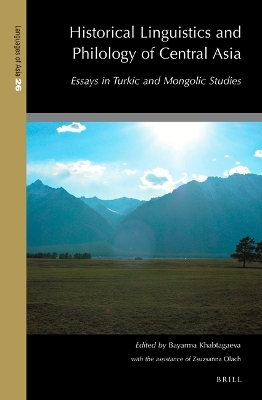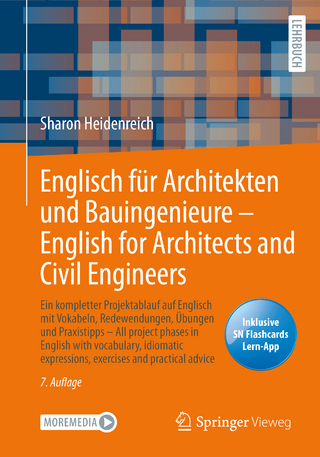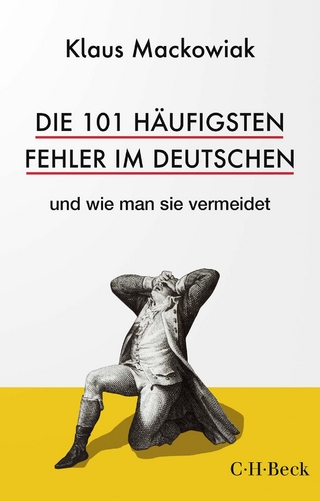
Historical Linguistics and Philology of Central Asia
Brill (Verlag)
978-90-04-49995-9 (ISBN)
András Róna-Tas, distinguished Professor Emeritus at the University of Szeged, Hungary, winner of several international prestigious prizes, has devoted his long academic career to the study of Chuvash, Turkic elements in Hungarian, Mongolic-Tibetan linguistic contacts, the Para-Mongolic language Khitan and other Central Asian languages and cultures.
This book, presented to him in the occasion of his 90th birthday, contains a collection of papers in Turkic and Mongolic Studies, with a focus on the literacy, culture, and languages of the steppe civilizations. It is organized in three sections: Turkic Studies, Mongolic Studies, and Linguistic and cultural contacts of Altaic languages. It contains papers by some of most renowned experts in Central Asia Studies.
Contributors are Klára Agyagási, Ákos Bertalan Apatóczky, Ágnes Birtalan, Uwe Bläsing, Éva Csáki, Éva Ágnes Csató, Edina Dallos, Marcel Erdal, Stefan Georg, Peter Golden, Mária Ivanics, Juha Janhunen, Lars Johanson, György Kara, Bayarma Khabtagaeva, Jens Peter Laut, Raushangul Mukusheva, Olach Zsuzsanna, Benedek Péri, Elisabetta Ragagnin, Pavel Rykin, Uli Schamiloglu, János Sipos, István Vásáry, Alexander Vovin, Michael Weiers, Jens Wilkens, Wu Yingzhe, Emine Yilmaz, and Peter Zieme.
Bayarma Khabtagaeva, Ph.D. (2007), habil., is Associate Professor in the Department of Altaic Studies at the University of Szeged, Hungary. Her works include Mongolic elements in Tuvan (Harrassowitz, 2009), The Ewenki dialects of Buryatia and their relationship to Khamnigan Mongol (Harrassowitz, 2017) and Language contact in Siberia. Turkic, Mongolic, and Tungusic loanwords in Yeniseian (Brill, 2019).
Preface
Tabula Gratulatoria
List of Illustrations and Tables
Notes on Contributors
Part 1 Turkic Studies
1 Pilot Entries of the Chuvash Etymological Dictionary under Preparation
Klára Agyagási
2 The Northwest Karaim Lord’s Prayer
Éva Á. Csató
3 Testing the Leipzig–Jakarta List on Turkic Languages Spoken in China
Marcel Erdal
4 The Kaepiči [Каепичи]
Peter Golden
5 Auf dem Wege der imperialen Eingliederung: Das Testament von ʿAlīkey Atalïq aus dem Jahre 1639
Mária Ivanics
6 The Chuvash Aorist
Lars Johanson
7 Zu den ‘gelehrten Entlehnungen’ indischer Herkunft im Alttürkischen
Jens Peter Laut
8 The Presentation of Kazakh Literature in Hungary: Research and Translation
Raushangul Mukusheva
9 Some Characteristics of Cardinal Numerals between 2 and 19 in Karaim Bible Translations: New Results Based on New Karaim Materials
Zsuzsanna Olach
10 Süci/sücü ‘wine’: The Career of an Old Turkic Word in Classical Anatolian and Ottoman Turkish Poetry
Benedek Péri
11 Sturtevant’s Law and Chuvash
Uli Schamiloglu
12 Magic, Sorcery and Related Terms in Early Turkic
Jens Wilkens
13 On the Expanded and Revised Second Edition of the Historical and Etymological Dictionary of the Turkish by Andreas Tietze
Emine Yılmaz
14 Baumwolle und Indigo
Peter Zieme
Part 2 Mongolic Studies
15 Handle with Care! The Limits of Use of Manuscripts Demonstrated on the Hua-Yi yiyu Texts of the National Central Library
Ákos Bertalan Apatóczky
16 Kalmyk Pipe and Mongolian Snuff Tobacco—as Means of Communication
Based on Gábor Bálint of Szentkatolna’s Linguistic Records, 1871–1873
Ágnes Birtalan
17 Issues of Comparative Uralic and Altaic Studies (9): Medial Intervocalic *k and *g in Mongolic
Juha Janhunen
18 Mongol kiged: A Verbal Adverb as Conjunction and Verbal Noun
György Kara
19 The ‘Oirat Fragment’ in the Erdeni tunumal neretü sudur and Its Linguistic Value
Pavel Rykin
20 A Previously Unknown Middle Mongolian Fragment from Pelliot Xixia Collection in the Bibliotèque Nationale de France
Alexander Vovin
21 Opfere im Tempel des Konfuzius! Ein kleiner Almanach der frühen Cing Zeit
Michael Weiers
22 On the Phonetic Value of Some Glyphs of Khitan Small Script
Wu Yingzhe
Part 3 Linguistic and Cultural Contacts of Altaic Languages
23 An Enigmatic Name for Wild Pears in Zazaki: A Study on Names of Pears in Asia Minor
Uwe Bläsing
24 Similarities in Hungarian and Turkic Folk Literature Folktales
Éva Csáki
25 The Arabic and Persian Layer of Names of Chuvash Mythical Creatures
Edina Dallos
26 On Perfectly Good-Looking Morphological Comparanda and Their (Sometimes, However, Lacking) Significance for Hypotheses of Language Relationship
Some Marginal Footnotes on the (Still Ongoing?) Altaic Debate
Stefan Georg
27 Siberian Draculesses
Elisabetta Ragagnin
28 A Recently Discovered Inner Mongolian Pentatonic Fifth Shifting Tunes, and Their Turkic and Hungarian Connections
János Sipos
29 Turcica and Mongolica in Muʿīn al-Dīn Naṭanzī’s Muntakhab al-Tavārīkh
István Vásáry
30 On Color Terms in Dagur
Bayarma Khabtagaeva
| Erscheinungsdatum | 19.11.2021 |
|---|---|
| Reihe/Serie | Languages of Asia ; 26 |
| Verlagsort | Leiden |
| Sprache | englisch |
| Maße | 155 x 235 mm |
| Gewicht | 983 g |
| Themenwelt | Geisteswissenschaften ► Sprach- / Literaturwissenschaft ► Sprachwissenschaft |
| ISBN-10 | 90-04-49995-4 / 9004499954 |
| ISBN-13 | 978-90-04-49995-9 / 9789004499959 |
| Zustand | Neuware |
| Haben Sie eine Frage zum Produkt? |
aus dem Bereich


